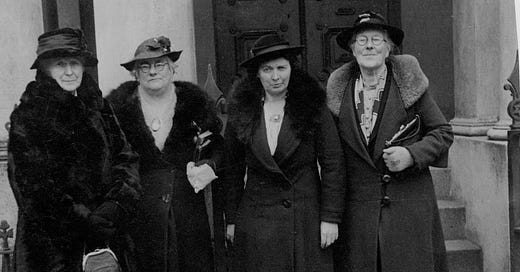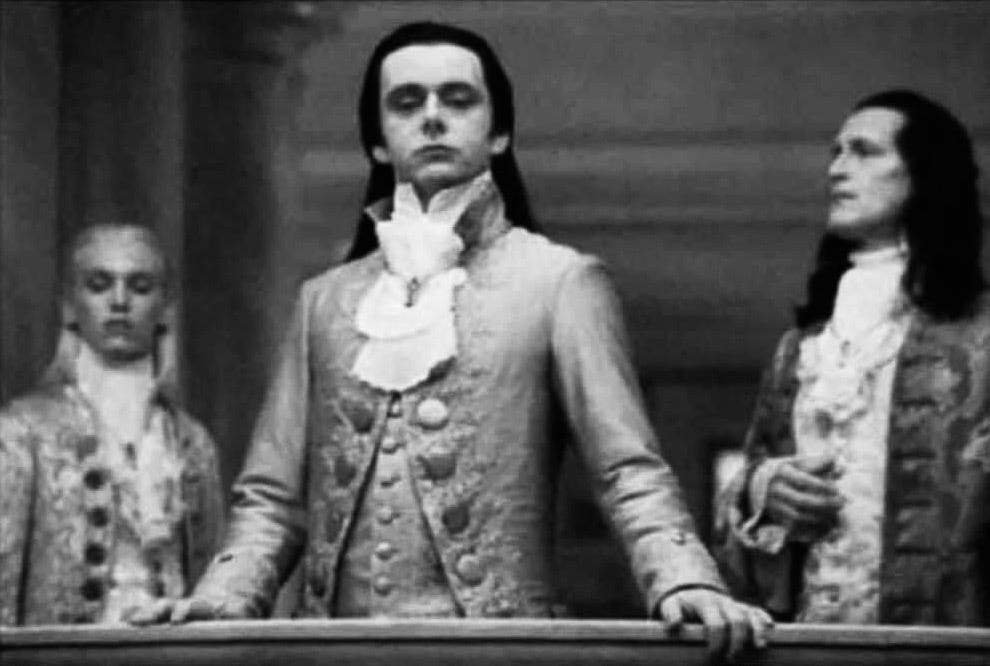We Prudes are churchgoing women. We’ve been informed by various sources that adherence to the Catholic Church results in prosperity, and since nothing else has worked in that realm, every Sunday sees us donning our most modestly resplendent raiment and hastening to mass. By and large it’s been a rewarding experience, but in addition to the murkiness of the financial model, there is an area of the modern church by which we are perplexed, and that is: The Music.
The hymnals in Catholic churches seem to be suffering from a poetic form of bipolar disorder. In the selfsame book, old-fashioned chestnuts like How Firm a Foundation, rub elbows with the sleekest of modern psalmody, and the results are jarring, to say the least. The conclusion that we’ve reached is obvious: the old hymns have got to go. They simply aren’t cutting it for the Modern Catholic.
The first reason is simple—the Modern Catholic likes to dance. Even when they can’t literally be dancing, they like to dance in their minds. Nothing paves the way to meditation on the Higher Things like a jaunty dance number, and this is why modern psalmody is so exquisitely tailored for the modern congregation. Nearly every hymn written in the 1970’s and after is in 3/4 time, perfect for reverent, liturgical mind-waltzing.
Then there’s the lyrics. Old fashioned hymn-writers were largely scholarly, stodgy men, with nothing better to do than sit around pinching snuff and manipulating big words into tricky, “poetic” arrangements, meant to baffle their listeners. This is how you get lines like “to you who for refuge to Jesus have fled.” “To you who—”? Unless you happen to be an owl with a stutter, you’re not singing that without advance warning. And can anyone actually explain the syntax of that line? Old hymns can sometimes take weeks to decipher. “To marvel at your beauty/ and glory in your ways/ and make a joyful duty/ our sacrifice of praise”—why don’t they just cut the frills and furbelows and say “we are happy to serve you”?
Modern hymn-writers understand this. They are almost all farmers or craftsmen—plain folk, tillers of the soil, who know well the weight of a handful of seeds in their work-calloused hands, who’s palms have caressed the rough-hewn edge of many a rustic table. As such, they are well equipped to speak to today’s wine-pressing, cloth-weaving, bread-kneading Catholic in a language that will be understood.
Take this line from We Come to Your Feast: “We place upon your table/ a humble loaf of bread/ the gift of field and hillside/ the grain by which we’re fed.” This is a wonderful example of the two critical facts which the contemporary hymnist has absorbed into every fiber of their being: bread comes from wheat, and “bread” and “wheat” rhyme with “fed” and “eat.” This providential syllogism has paved the way for countless hymns that almost literally pierce the eardrums in the beauty of their simplicity.
A contemporary hymn may sometimes be confusing, but when it is, it’s in a mystical sense—the meaning is the mystery. Take We Rise Again from Ashes—“If all our world is ashes/ then must our lives be true/ an offering of ashes/ an offering to you.” That song has accompanied me through 20-plus Ash Wednesdays, and I still haven’t the foggiest idea what sacred mystery it’s driving at. Or this inspiring riddle from Many and Great: “Many and great/ are pebbles in the sand/ the sun glows/ the wind blows.” What exactly does it have to do with God or the Eucharist? No one is quite sure. Aren’t pebbles small, the opposite of great? You would think so; the paradox will haunt me for decades to come, but that’s the point.
And lastly, there’s the music itself. Many old hymns are written with a congregation in mind. The melodies are repetitive, and teachable; one can picture throngs of churchgoers in almost any era warbling them together in voices trained and untrained— songs floating out the windows of an old, wooden church, soaring to the dome of a stone cathedral, whistled by children, hummed by homemakers. Irritatingly accessible.
Modern hymn tunes, on the other hand, are usually written with one to two belting, Broadway-style musicians in mind, and fittingly, the melodies call to mind moments of climactic emotion in a musical theater production. In fact, one of our favorite games to play in church (an excellent place for playing games) is Place the Hymn in a Stage Production. Does it best suit the parting? The love-confession? The introspective mirror song? Try it for yourself! It never disappoints. If your choir is not comprised of belting, Broadway style musicians, contemporary hymns maintain a certain interesting quality, nonetheless—sort of like attending a middle-school piano recital every Sunday, forever.
In conclusion, it’s time to kick out the quill pen and paint, if we may borrow Walt Dinsey’s stirring phrase, with all the colors of the wind. The hymnal, by canon law, should be a place where one encounters the mystical through the simplistical, the devotional through the emotional. These are the highest tenets of our faith, and it is only by our adherence to them that we will build the Kingdom of God on earth, for in the beautiful words of St. Bonaventure: “You may say I’m a dreamer/ but I’m not the only one/ I hope someday you’ll join us/ and the world will be as one.”
—C.C.






I like how these Broadway songs encourage everyone to dress up. I always wear my top hat and cane so I can hold it above my head when the song is done and yell, "ONE MORE TIME!"
Also during communion I sprint towards the priest or old woman holding Our Lord and slide across on my knees abruptly stopping in front of them yelling, "TA DAAAAAAAAAA!!!" after which I receive Him on my tongue.
My most prayerful moments in church are when the wedding-singer-cantor-lady starts singing "Come to jayyyysus and liiiive" as we file up for Communion. Legit poetry! How can Palestrina compete with that?